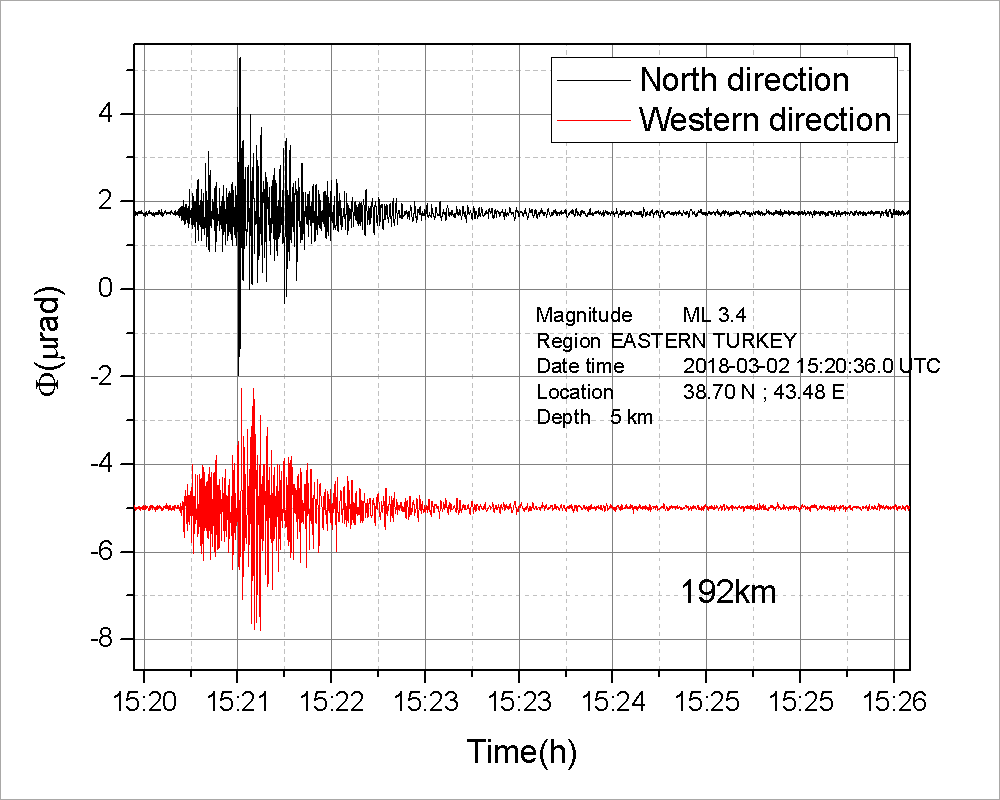Compact PLI installed at Garni Geophysical Observatory
News, 14 October 2021
A novel quantitative method for predicting earthquakes is being developed in Armenia. For this purpose, specialists of the Laboratory of Nuclear Problems of the Joint Institute for Nuclear Research have installed the Compact Precision Laser Inclinometer, a new improved version of the PLI, at the International Science Centre “Garni Geophysical Observatory”. Researchers from the DLNP JINR Experimental Department of Multiple Hadron Processes Mikhail Lyablin, Alexey Kuzkin, and Grach Torosyan done this work from 26 September to 2 October 2021. They commented on the results of their business trip.
 International Science Centre “Garni Geophysical Observatory”
International Science Centre “Garni Geophysical Observatory”
The Armenian Highlands is a seismic-hazard region where numerous earthquakes occur. It is a suitable test site for trying out the method for detecting seismic energy accumulation zones using a precision laser inclinometer (PLI) network. A compact precision laser inclinometer (CPLI) will continuously monitor the Earth’s surface inclination in 10-second intervals with a precision of about 10-8 radians. This precision is sufficient to identify seismic energy accumulation zones and forecast upcoming earthquakes. The study is being conducted along with Armenian colleagues Avetik Essayan (Shirak Technologies company), academician Lenser Agalovyan (Academy of Sciences of Armenia) and Jon Karapetyan (Institute of Geophysics and Engineering Seismology of Armenia).
Earlier, in 2018, the previous PLI version was put into operation in Garni by our colleagues. It successfully operates and transmits data online to JINR. The location of the operating PLI in the tunnel of the geophysical observatory is presented in the photo.
 Precision laser inclinometer in the tunnel of the Garni Geophysical Observatory
Precision laser inclinometer in the tunnel of the Garni Geophysical Observatory
Detection of an earthquake of a rather low magnitude that occurred 200 km away from the device is shown in the figure 1.
 Figure 1. Detection of a 3.4 magnitude earthquake
Figure 1. Detection of a 3.4 magnitude earthquake
This time, our researchers brought to the Garni Geophysical Observatory a new PLI version, its compact type, CPLI, with improved characteristics. The scientists demonstrated its capacities to the colleagues from Armenia.
 Installing the compact precision laser inclinometer in the tunnel of the Garni Geophysical Observatory
Installing the compact precision laser inclinometer in the tunnel of the Garni Geophysical Observatory
The operating version in Armenia, according to the agreement with Shirak Technologies, envisages a final adjustment of the “Armenian” version of the electronic board which controls inclinometer micromotor controllers and transmits signals first to the external ADC unit and then via the Ethernet to the Geophysics Centre of Armenia and to JINR. These data are used to calibrate the inclinometer and to perform measurements.
Manufacture of 12 CPLIs based on control electronic boards produced by Shirak Technologies and placement of the CPLI network at geophysical objects prepared for seismic observations in Armenia are planned. Dynamics of Earth surface changes will be followed and potential seismic energy accumulation zones will be identified with these inclinometer network measurements.
Forecasting earthquakes is a social task of great importance. The development of the earthquake prediction method using the CPLI network is a pilot project to be implemented in Armenia within the next five years.
It is obvious that this method is of unprecedented significance and will be much in demand at any seismic-hazard region of our planet. Kamchatka, Uzbekistan, Switzerland, France and Italy have already expressed their interest in this method.
We are at the very beginning of testing the novel earthquake prediction method and hope that the project development will proceed successfully.